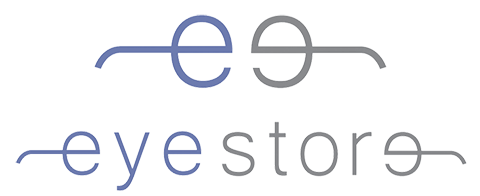
Glaucoma Eye Tests
Glaucoma is a leading cause of preventable vision loss and blindness in older individuals in Australia and the second leading cause of blindness in the World, treatment of this condition can prevent more blindness than macular degeneration.
What is Glaucoma?
Glaucoma is not a single disease. It is actually a group of eye diseases that cause damage to the optic nerve, most often due to an increase in pressure inside the eye, known as intraocular pressure (IOP). IOP has a normal range of 15-20 mmHg, when higher than this, the risks of developing glaucoma increase dramatically.
When detected in the early stages, glaucoma can often be controlled, preventing severe and permanent vision loss and blindness. However, symptoms of noticeable vision loss often only occur once the disease has progressed. This is why glaucoma is known as “the sneak thief of sight”. Unfortunately, as glaucoma damages the nerve, once vision is lost the damage is usually permanent.
Treatments include medicated eye drops or surgery that can lower and regulate the IOP, the aim is and slow down the progression of the disease to prevent further eye damage. The type of treatment depends on the type and the cause of glaucoma.
Risk Factors
Prevention is possible only with early detection and treatment. Since symptoms are often absent, regular and frequent eye tests, which include a glaucoma test are essential, particularly for individuals at risk of the disease. While glaucoma can affect anyone, the following traits put you at a higher risk:
- Age over 60
- Hispanic or Latino descent, Asian descent
- African American ancestory and over the age of 40
- Family history of glaucoma
- Diabetes
- High myopia (nearsightedness)
- Long term use of specific medications (e.g. steroids)
- Significant eye injury, even if it occurred in childhood
Understanding Glaucoma
Due to a buildup of pressure in the eye, glaucoma causes damage to the optic nerve which is responsible for transmitting visual information from the eye to the brain. If not managed correctly, glaucoma can eventually lead to ‘tunnel vision’ and legal blindness.
There are a number of types of glaucoma, some more acute than others, causing sudden rise in IOP and nerve damage. Learn about the common types of glaucoma and the differences between them.
Early detection and treatment of glaucoma are essential to stopping or slowing the disease progression and saving vision. Treatment can include medicated eye drops, pills, laser procedures and minor surgical procedures depending on the type and stage of glaucoma.
Signs and Symptoms of Glaucoma
The intraocular pressure (IOP) caused by glaucoma can slowly damage the optic nerve, causing a gradual loss of vision. Vision loss begins with peripheral (side) vision, resulting in limited tunnel vision. Over time if left untreated, central vision will also be affected and the tunnel vision worsens, eventually causing total blindness. Unfortunately, any vision that is lost from the optic nerve damage is permanent and cannot be restored.
What are the Symptoms?
Typically, glaucoma starts without any obvious symptoms. At the early onset of the most common type of glaucoma “open angle” glaucoma (OAG), vision remains normal and there is no pain or discomfort. This is why this disease is nicknamed the “sneak thief of sight”.
An acute type of glaucoma, called angle-closure glaucoma (ACG), can present sudden symptoms such as foggy, blurred vision, halos around lights, eye pain, headache and even nausea. This is a medical emergency and should be assessed immediately as the intraocular pressure can become extremely high and cause permanent damage within hours.
Types of Glaucoma
The primary forms of glaucoma are open-angle and narrow-angle, with open-angle being the most common type.
Primary open-angle glaucoma (POAG)
POAG gradually progresses without pain or noticeable vision loss initially affecting peripheral vision. In POAG the IOP is usually above 18-20mmHg. By the time visual symptoms appear, irreparable damage has usually occurred, however, the sooner treatment starts the higher the chance that any vision loss can be prevented. When untreated, vision loss will eventually result in total loss of peripheral vision (or tunnel vision) and eventually total vision loss.
Normal-tension glaucoma or low-tension glaucoma
This is another form of open-angle glaucoma in which the intraocular pressure remains within the normal level, under 18- 20mmHg. The cause of this form of glaucoma is not yet fully understood, but is believed to be due to disruptions and insufficient blood flow to the optic nerve, in this condition the IOP is within ‘normal range’ yet it still causes damage to the optic nerve. Individuals of Japanese descent, women and those with a history of vascular disease or low blood pressure are at higher risk.
Angle-closure glaucoma
Acute angle-closure glaucoma is marked by a sudden increase in eye pressure, often higher than 30mmHg, which can cause severe pain, blurred vision, halos, nausea and headaches. The increase in eye pressure is caused by a blockage in the fluid draining out of the eye, this is a medical emergency and should be treated immediately. Without prompt treatment to clear the blockage vision can be permanently lost.
Congenital glaucoma
The inherited form of the disease that is present at birth. In these cases, babies are born with a defect that slows the normal drainage of fluid out of the eye, they are usually diagnosed in their first year of life. There are typically some noticeable symptoms such as excessive tearing, cloudiness or haziness of the eyes, large or protruding eyes or light sensitivity. Surgery is usually performed, with a very high success rate, to restore full vision.
Secondary glaucoma
Glaucoma can develop as a complication of eye surgeries, injuries or other medical conditions such as cataracts, tumors, or a condition called uveitis which causes inflammation. Uncontrolled high blood pressure or diabetes can result in another serious form called neovascular glaucoma.
Pigmentary glaucoma
A rare form of glaucoma, this occurs when pigment from the iris sheds and clogs the drainage of fluid from the eye resulting in inflammation and damage to the eye and drainage system.
Treatment of glaucoma is dependent upon the severity and type of glaucoma present.
Glaucoma Diagnosis
Detecting Glaucoma
During a routine comprehensive eye test in Bankstown to check for glaucoma, the optometrist may dilate your eye to examine the optic nerve for signs of glaucoma and will also measure the intraocular pressure (IOP) with an instrument called a tonometer. Other tests used in the diagnosis of glaucoma may include visual field test and retinal imaging devices.
IOP Measurement
Tonometry involves using a device which blows a puff of air on to the eye or numbing the eye with drops and then gently pressing on the surface of the eye to measure the pressure. Since your IOP can fluctuate throughout the day and glaucoma can exist without elevated IOP, the IOP measurement alone is not enough to diagnose nor rule out the disease. If there are signs of this disease, further testing will be performed.
Visual Field Test
A visual field test is designed to detect the functioning of the retinal nerves by detecting any blind spots in your peripheral, or side field, of your vision. You will be asked to place your head in front of a device and while looking ahead and indicate when you see a visual signal in your field of view.
Retinal Imaging
Your optometrist may also test your optic nerve using various retinal imaging devices, including digital photography or Optical Coherence Tomography (OCT). These technologies provide accurate images and analysis of the optic nerve and can be used for digital interpretation of the images and comparative analysis to monitor any changes over time.
Treating Glaucoma
Treatment for glaucoma depends on the type and severity of the disease and can include medication such as eye drops, medication, laser treatments or eye surgery.
Medication
Medicated eye drops to lower the IOP are often the first resort for controlling pressure-related glaucoma. These drops may have some uncomfortable side effects, but compliance with the treatment plan is essential for preserving vision and halting the progression of the disease.
Laser and Surgery
Laser and surgical procedures are designed to control the flow of fluids through the eye by either decreasing the amount of fluid produced or improving the drainage of the fluid out the eye. Your optometrist may decide that a combination of surgery and medication could be the most effective and will discuss any treatment options with you as well referring you to an ophthalmologist.
Early Treatment
It cannot be stressed enough that the most effective treatment for glaucoma occurs when the disease is detected and treated early, before any nerve damage or vision loss occurs. Any vision that is lost cannot be restored. This is why the best prevention is awareness, by knowing your risks and taking responsibility by having your eyes examined by an optometrist on a regular basis.
